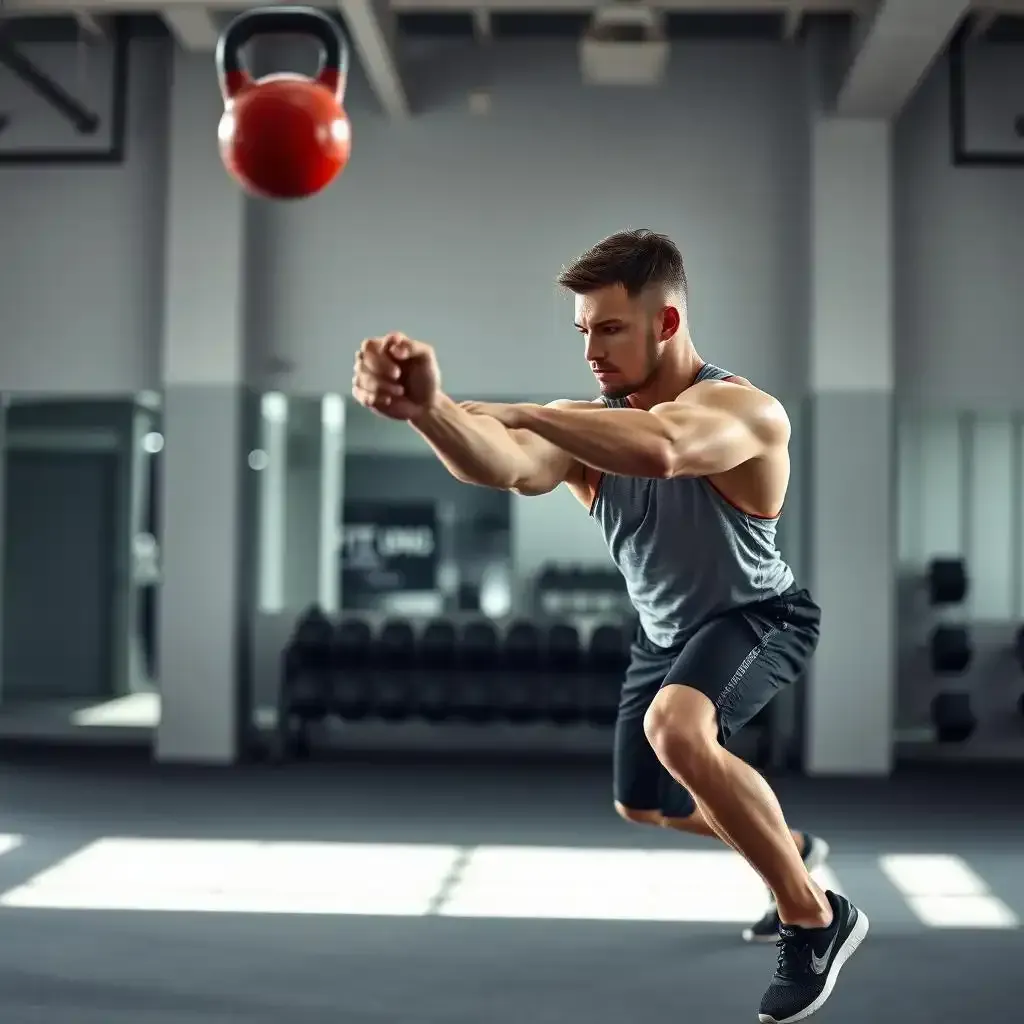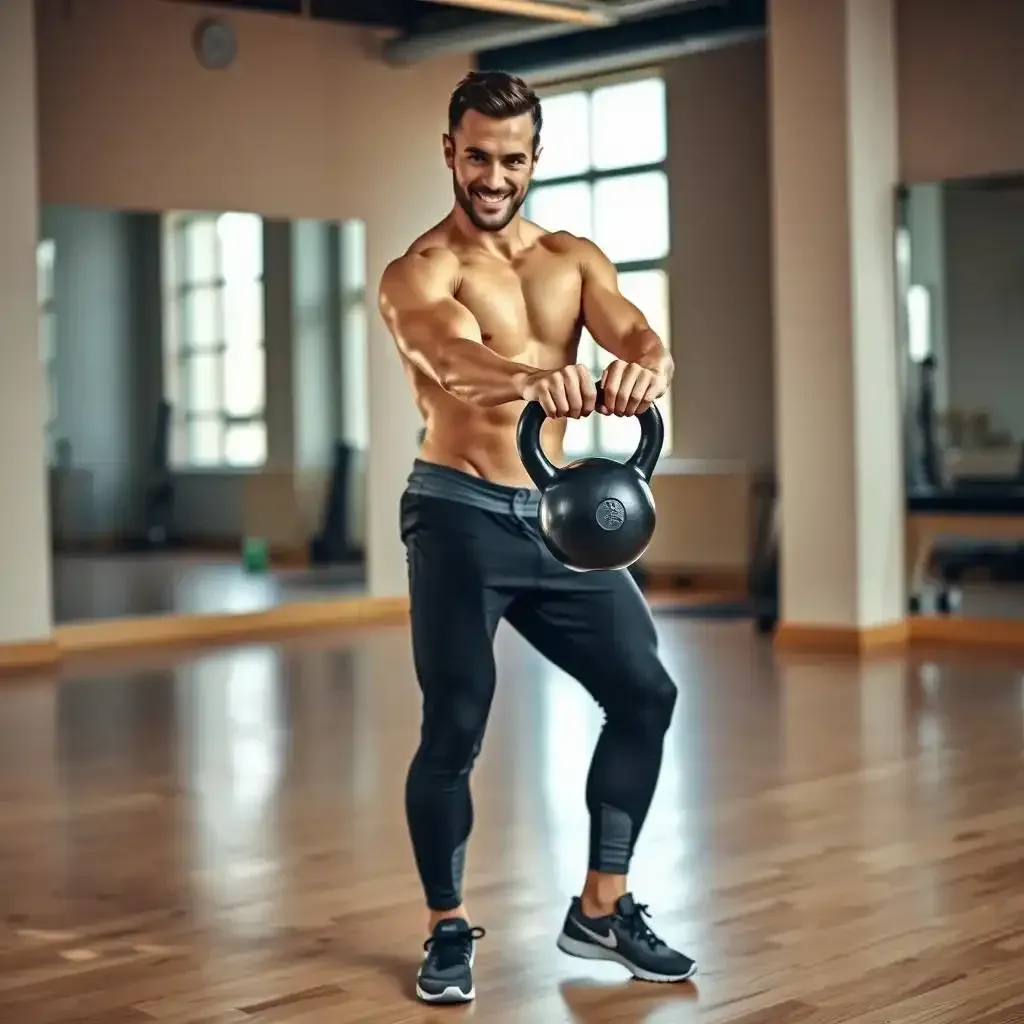Table of Contents
So, you're curious about kettlebells and their effect on your knees? That's smart! Many people worry about whether kettlebell training is tough on the knees. The truth is, kettlebells can actually *help* your knees, but only if you use them correctly. Think of it like this: a poorly driven car will break down, but a well-maintained car will last for years. This article, from kettlebellworkout.homes, will show you how to make your knees happy with kettlebells. We'll cover exercises that strengthen the muscles supporting your knees, explain proper form to avoid injury, and even discuss some advanced techniques. Are your knees ready for a workout? Let's get started!
Kettlebell Knee Support: Strengthening Your Knees

Kettlebell Knee Support Strengthening Your Knees
Let's talk about how kettlebells can be a game-changer for your knee health. Think of kettlebells as your knee's best friend. They help strengthen the muscles around your knees, which can reduce pain and prevent injuries. It’s like building a solid foundation for a house. If the foundation is strong, the house is stable. The same goes for your knees.
One of the key ways kettlebells support your knees is by strengthening your hips. Your hips and knees work together like a well-oiled machine. When your hips are strong, they take the pressure off your knees. Imagine you're carrying a heavy backpack. If your shoulders are weak, the weight will strain your back. But if your shoulders are strong, the weight is distributed evenly, and your back feels better. Kettlebells help you build those strong hips.
- Strengthen hips to reduce knee strain
- Kettlebells distribute weight evenly
- Build a solid foundation for your knees
Another benefit is improved movement. Kettlebells help you move more naturally, which can reduce the wear and tear on your knee joints. It’s like learning to walk in a new pair of shoes. When you first put them on, they might feel a bit stiff. But after a while, they break in, and your feet feel more comfortable. Kettlebells help your knees move more smoothly, making everyday activities easier.
For those new to kettlebells, check out our guide. It’s a great way to get started without overwhelming your knees. And if you need some inspiration, our might be just what you need to stay motivated.
Exercise | Benefits | Tip |
|---|---|---|
Kettlebell Swings | Strengthens hips and legs | Focus on hip hinge |
Kettlebell Deadlifts | Strengthens core and legs | Engage your core |
High Knees | Improves knee movement | Keep knees lifted |
Kettlebell Exercises for Knee Health and Stability

Kettlebell Exercises For Knee Health And Stability
Kettlebell Swings: A Hip-Hinge Hero
Okay, so kettlebell swings. They're kinda famous, right? But they're not just some fancy fitness move – they're seriously good for your knees! Think of your hips as the boss of your legs. When your hip muscles are strong, they do most of the heavy lifting, taking the pressure off those precious knees. A strong hip hinge is key here – it's like learning to smoothly shift gears in a car, avoiding any jerky movements that could hurt your knee. You don't want to be that person who slams the gears, right? Start slow, focus on that hip movement, and feel the strength build in your glutes (your butt muscles!). Before you know it, you'll be swinging like a pro, and your knees will thank you. For more on mastering the swing, check out our beginner kettlebell routines guide.
- Start with a light kettlebell.
- Focus on hip hinge, not your back.
- Keep your core tight.
Kettlebell Deadlifts: Core Capability for Knee Support
Next up: kettlebell deadlifts. Now, these aren't your grandma's deadlifts (unless your grandma is a total badass). The kettlebell deadlift is all about engaging your core – that's your midsection, the strength center of your body. A strong core is like a superhero cape for your knees, protecting them from strain and injury. Imagine trying to lift a heavy box with a weak core – disaster! But with a strong core, you'll lift with stability and grace, keeping your knees safe and sound. This is especially helpful if you have some knee issues. Remember, always start with lighter weights and focus on the perfect form. You can find more tips in our kettlebell basics guide.
Exercise | Muscles Worked | Knee Benefit |
|---|---|---|
Kettlebell Goblet Squat | Quads, glutes, core | Strengthens muscles around the knee |
Kettlebell Romanian Deadlift | Hamstrings, glutes | Improves hip mobility and stability |
Understanding Kettlebell Form for Knee Safety

Understanding Kettlebell Form For Knee Safety
Okay, so we've talked about how awesome kettlebells are for your knees, but let's be real – bad form can turn a knee-friendly workout into a knee-wrecking disaster. Think of it like riding a bike: if you don't learn the right way, you'll fall! It's all about control and precision. I'm talking smooth movements, no jerky jolts, and a focus on proper posture. Imagine a graceful dancer – that's the energy you want to bring to your kettlebell routine.
One of the biggest mistakes I see? People letting their knees cave inward during squats or swings. It’s like trying to walk on wobbly stilts. Your knees should track over your toes; imagine a straight line from your hip to your ankle. Another frequent issue is rounding your back, which puts a ton of pressure on your spine and your knees. Keep that core tight – it's your body's natural corset, supporting your back and protecting your knees. A weak core is a knee's worst nightmare. For more on proper form, check out our - it's packed with tips and tricks!
- Keep knees aligned with your toes.
- Maintain a straight back; Engage your core
- Control the weight; don't let it control you.
Starting with lighter weights is crucial, even if you're a seasoned gym-goer. It's not about how much you lift, it's about how well you lift it. Think of it like learning to play the piano. You wouldn't start with Rachmaninoff, would you? You start with simple exercises, focusing on perfect form before gradually increasing weight. It's a marathon, not a sprint! We have some great beginner routines on our site. Check out our for a structured start.
Another important thing is warming up properly before you begin. Think of it as prepping your car engine before a long drive. A good warm-up gets your muscles ready to work, reducing the risk of injury. This could include some light cardio, dynamic stretching, and a few practice swings with a lighter weight. And don't forget to cool down afterward – static stretches are your friend here! For some ideas, see our .
Mistake | Correction | Why it matters |
|---|---|---|
Knees caving inward | Knees track over toes | Reduces knee strain and injury |
Rounded back | Engage core, maintain straight back | Protects spine and knees |
Using too much weight | Start light, focus on form | Avoid injury, build strength |
Listen to your body. Pain is your body's way of saying "Hey, something's wrong!" If you feel any sharp pain in your knees, stop immediately. Don't push through it. Rest, ice, and consider consulting a physical therapist or doctor. It's better to take a break than to risk a long-term injury. If you're unsure about anything, it's always a good idea to consult our detailed .
Remember, building strong knees is a process, not a race! Be patient, consistent, and focus on proper form, and you'll be swinging those kettlebells like a pro in no time. And most importantly, have fun! If you're having fun, you're more likely to stick with it. For more exercises, check out our .
- Listen to your body.
- Rest and recover.
- Have fun!
Advanced Kettlebell Techniques for Knee Support

Advanced Kettlebell Techniques For Knee Support
Turkish Get-Ups: The Full-Body Knee Saver
Let's talk Turkish Get-Ups (TGUs)! These aren't your average kettlebell exercise; they're a total-body movement that's surprisingly gentle on your knees. Think of them as a full-body warm-up and a strength builder all rolled into one. You start lying on your back with the kettlebell, then gracefully rise to a standing position, using your entire body to control the weight. It's like a slow-motion ballet, but way more awesome. Why are they so good for your knees? Because they build incredible core strength and hip stability, taking the pressure off your knees. Plus, they improve your body awareness – you'll learn how your body moves and how to control it, preventing those knee-compromising movements. If you're feeling a bit unsteady, start with a lighter kettlebell and focus on the movement. Want a more detailed guide? Check out our page!
- Start slow and controlled.
- Focus on proper form over speed.
- Use a lighter weight initially.
Kettlebell Flows: Dynamic Movement for Knee Health
Now, let's move on to kettlebell flows. Think of these as a series of fluid movements, connecting different kettlebell exercises. These aren't just about strength; they're about improving your mobility and flexibility. It's like dancing with your kettlebell – graceful, powerful, and incredibly beneficial for your knees. By linking movements together smoothly, you're improving the range of motion in your joints, which is key for knee health. A good flow can be like a massage for your knees, lubricating the joints and improving their overall function. It's all about control and coordination, working different muscle groups to build stability. For a structured approach to kettlebell flows, take a look at our guide on . It's perfect for beginners and those recovering from injuries.
Flow Element | Focus | Knee Benefit |
|---|---|---|
Kettlebell Swings to Goblet Squats | Hip hinge to leg strength | Improved hip stability, reduced knee stress |
Clean to Press | Full-body movement | Enhanced shoulder stability and core strength |
Final Thought
Remember, the key to kettlebell knee support is proper form and a gradual progression. Don't rush into heavy weights, and always listen to your body. If you experience any knee pain, stop the exercise and consult a healthcare professional. With the right approach, kettlebell training can be a fantastic way to build strength, improve stability, and support the health of your knees for years to come. Happy lifting!